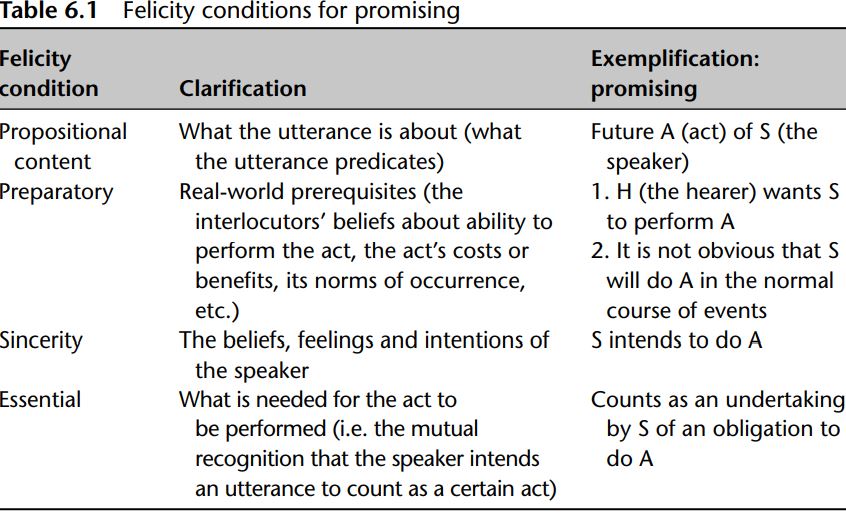
Developing speech act theory: Searle
 المؤلف:
Jonathan Culpeper and Michael Haugh
المؤلف:
Jonathan Culpeper and Michael Haugh
 المصدر:
Pragmatics and the English Language
المصدر:
Pragmatics and the English Language
 الجزء والصفحة:
162-6
الجزء والصفحة:
162-6
 17-5-2022
17-5-2022
 2306
2306
Developing speech act theory: Searle
John R. Searle did much to develop Austin’s work, especially the notion of illocutionary act, and also to bring it to the attention of a wider range of scholars. We will focus on two of his contributions – his formalization of felicity conditions and his development of a taxonomy of speech act types – and one contribution– namely, indirect speech acts.
Austin’s notion of felicity conditions was developed and formalized by Searle (e.g. 1969). Searle tried to devise constitutive rules for speech acts; that is, rules that create the activity itself, just as is the case with a game of football or chess (such rules contrast with regulative rules, such as the rules to regulate car traffic). This is rather different from Austin’s tack whereby felicity conditions were conceived of as necessary for the “happy” performance of a speech act, rather than actually constituting them. Consider Searle’s felicity conditions for the speech act of promising (the rightmost column is based on information in Searle 1969: 57–60):

This scheme seems to have the potential to distinguish one speech act from another, and thereby to offer a robust and comprehensive description of speech acts. For example, in order to achieve a description of the speech act of threat, we simply need to tweak one felicity condition of promising: changing the first preparatory condition to “H does not want S to perform A”. In practice, however, such descriptions are of limited use, notably because speech acts do not lend themselves to neat categorization. For example, suggestions, advice, warnings and threats have a habit of blurring into each other. We will address the issue of indeterminacy. One particular point to note about Searle’s frame-work for speech acts, and also one that departs somewhat from Austin’s, is its closer alignment with the internal properties of the speaker, their beliefs, feelings and especially intentions (see Sbisà 2002). For Searle (e.g. 2007: 28), speech acts express intentional states. Therein lies a problem, the effects of illocutionary acts depend upon the recognition of the speaker’s intentions by the hearer, and this, as we noted, is far from straightforward (but see Sadock 2004: 59). In contrast, Austin (e.g. 1975: 109) associated illocutionary forces more strongly with convention.
 الاكثر قراءة في pragmatics
الاكثر قراءة في pragmatics
 اخر الاخبار
اخر الاخبار
اخبار العتبة العباسية المقدسة


